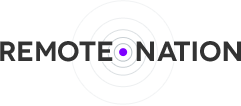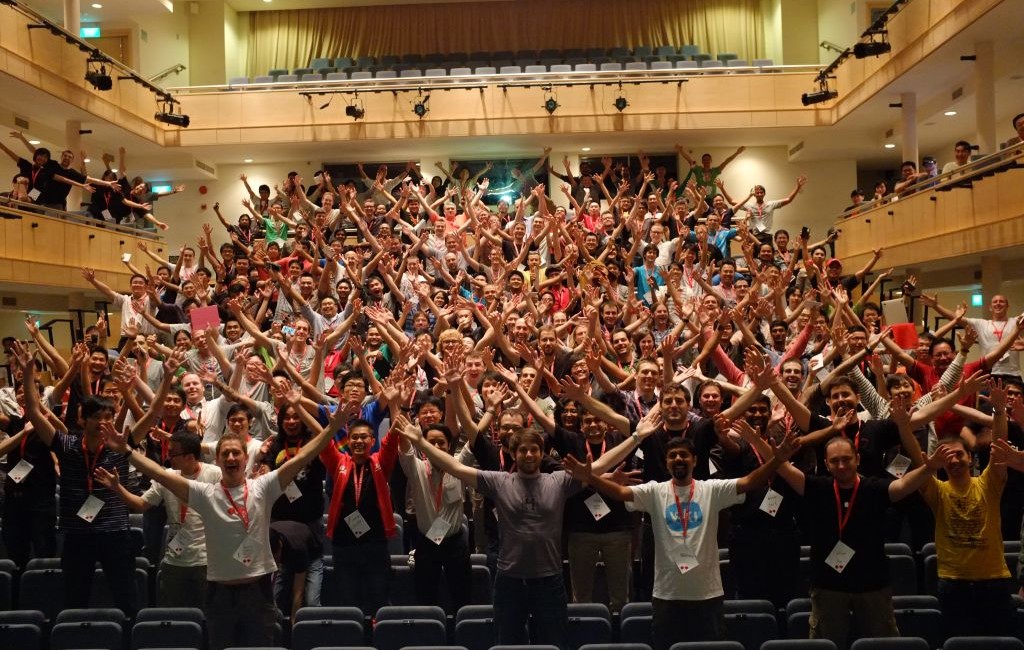What is the best project management tool for businesses & remote teams? We get this question a lot, and it’s something that’s critical to all of our projects at FullStack. We’ve used a variety of tools over the years starting with our own home-grown application that we called “Workflo”. Eventually, we moved onto some open source tools like Trac and Redmine. We’re now running things on SaaS offerings because the quality of available tools has picked up significantly in recent years.
Each project we work on is completely different, but proper project management has certain fundamentals that need to be addressed, no matter what tool used.
For these reasons, we’ve decided to create a series of different categories (plus winners) allowing you to pick the best tool for your needs.
We’ve divided our review into the following categories: Large Projects, Small Projects, Free, Personal & Overall Winner.
***We know there’s many, many great project management services out there, but we just haven’t had the time to properly use them all. If there’s something you think we HAVE to try, please write in the comments!
****
Pivotal Tracker
Pros
- Points – Pivotal makes assigning points to stories very easy & gives project managers many different options to choose from for point systems. (Fibonacci, standard, etc)
- Linking b/w Cards- Pivotal assigns id #’s to each card, making linking very easy b/w various cards.
- Integrations – Pivotal integrates with almost every other service you might use in development (github, hipchat, slack,etc)
- Multiple WorkSpaces – If your team is large and has multiple projects, the Multiple workspace features allows you to jump b/w the different ones.
- Velocity + Volatility – Pivotal has many tracking features of points, allowing sophisticated teams to measure / optimize their workflow, identify bottlenecks, and work smarter.
- UX / UI + Flow- We love Pivotal’s automatic movement of cards for sprints from “Backlogs” into “Current”, the limited options, and simplistic feel of it.
- Reports: Pivotal gives users the ability to create burn down charts & other awesome projections easily and succinctly.
Negatives:
- Cost- Pivotal charges per user, so for large teams- or for teams that need to have non-developers ‘monitor’ the progress, the price can get quite high quite quickly
- Break in Period- There’s a break in period to get used to the flow & general look / feel of the board. A full board can look quite intimidating at first glance
- Creating Cards – Creating cards can take a long time since there’s so many fields. Not a problem for important projects, but unneeded for simple or test projects
- Small Cards – The actual size of the cards is small, which is not a problem for viewing the board, but is very annoying when creating the cards for the first time. We really wish creating the cards happened in a larger box.
Overall:
We’re really big fans of Pivotal Tracker for project management, but the developers we work with also prefer it over other tools we’ve tried it in the past. Pivotal has it’s share of weaknesses, and it isn’t the fastest tool to use, but large projects w/ a big scope generally won’t have cards that need to be re-written, or moved around quickly. If your company or project is looking for something consistent and methodical so you can just focus on development, Pivotal should work great for you!
Jira
Pros:
- Feature Rich – Jira & Jira Agile has a tool for almost any project you could possibly think of.
- Well Known – Many people have used Jira at some point, so there’s not much of a break-in period. At the very least, most people have used one of their other, non project management products.
- Atlassian – Jira is apart of Atlassian, which is essentially a Salesforce for developers. They have a different service for everything a team (large or small) of developers would ever need.
- Flexible – So many features allows users to stick w/ Jira / Atlassian, and use different types of boards w/ different methodologies (Agile,Kanban,etc) without changing services.
- Stable – We haven’t really noticed much downtime in any of the projects where we’ve used Jira.
Negatives:
- Too Busy – The actual board itself is very busy w/ lots of features, which takes away focus quite easily. While there are ways we can minimize this, we
- Too many features– There are SO many features that it’s easy to get lost as you’re trying to create the perfect environment for your team and projects
- Cost – Like Pivotal Tracker, it can get quite pricey quite fast.
Overall:
Overall, Jira is a solid option for many teams, but it’s hard to transition into after using other software. Unfortunately, Jira is on the ‘More is better” side of the fence, and they have an overwhelming amount of features. This produces the expected result of confusion, training manuals, and less focus on the core features from their internal team. Hence, if you’re looking to switch and don’t see your company switching again for a long time, or already use another Atlassian product, then Jira will be a great fit. Otherwise, we believe there are better options.
Basecamp
Positives:
- Simple Interface – Basecamp has a very inviting look & feel to it,
- Well Known – Basecamp has been around since the early 2000’s, which is quite a bit longer than the other services on this list.
- Good for non-technical. – Basecamp can be great for those who are non-technical and need a project management tool for non ‘app’ related things
- All-in-one features– Basecamp has chat, calendars, messages, etc. It’s swiss-army knife, but doesn’t go crazy (like Jira)
- Built by customers – 37Signals has always built their product w/ their community’s feedback, so basecamp could be the perfect solution for what your team needs.
Negatives:
- Too Simple – For sophisticated & large development teams, Basecamp is simply not robust enough. If your team has a dedicated project manager, scrum master, product manager, etc- there’s going to be a lot of things that the team will need to measure against, but Basecamp won’t be able to provide.
- Tracking – Similar to above, Basecamp is light on the # of tracking and measuring tools.
- Non-Professional– This is about ‘nit-picky’ as possible, but Basecamp’s warm and inviting interface might give some clients the wrong impression of it’s power.
Overall:
Basecamp is a great option for both small and large teams, and could be a perfect fit for agencies that don’t need to get too technical w/ their projects – designed focused firms for instance. Either way, we definitely suggest Basecamp as an option for teams & projects leads to check out.
Trello
Positives:
- So Simple! – Trello is so ridiculously simple to use it’s funny. We’ve gotten so good at it that we can create an entire set of user stories + sprints for a large project in under an hour.
- Well Known – Trello is becoming well known w/ non technical people, which can be great for input from clients.
- Drag-Based Interface -Trello has a very simple point and drag interface, which also carries over to their free iOS and Android apps.
- Communication It’s very easy to write messages & get team member’s attention through their @ feature + assigning cards to different people.
- Shortcuts – Trello has some nifty shortcodes which allows power users to create cards extremely fast.
- Cost – It’s free! The premium & business tiers have a few more features, but it’s mostly organizational things.
Negatives:
- Too Simple– Trello has many features that work for a variety of projects, but it starts to become too simple for teams larger than 5.
- Tracking– Similarly to basecamp, Trello leaves a lot to be desired for teams that need to measure & optimize their output. Trello wasn’t made for those types of projects, so it does prevent itself from reaching the entire PM market, but tha
Overall:
We love trello! We’ve used it for managing projects, sales pipelines, content for our RemoteNation, around the house things, personal study projects, and even planning a bachelor party :). They biggest downfall of trello (that it doesn’t have the sophisticated tools as Jira or Pivotal) is a blessing in disguise because they stay true to what the product is: a super simple and fast project management service!
Asana
Positives:
- Well Funded – Asana has raised over $38 Million (we’re not sure how…) so it’ll be around and they’ll be able to keep innovating
- Content Holder– Asana’s ‘project’ categorization style is great at holding large amounts of content for different projects
- Works– We’ve never really noticed bugs, or really anything wrong w/ the actual functionality of asana.
- Calendar– They have a great calendar which is good for collaboration.
- TeamWork– Asana is built for teams, so teamwork is a huge part of its workflow.
Negatives:
- Not Intuitive – Asana has never felt truly intuitive, and it took us awhile to get used to it.
- Pricing- Asana has a free tier that will be enough for most users, but the premium features can get quite expensive even w/ a small # of users.
- How it Works – Asana has invested quite a bit of time & money into their how it works videos, pictures and tutorials; proving that the app is not simple to use.
Overall:
Asana can be a perfect option, but it’d take a very specific project or team. We assume that it’d be hard for most teams to switch to Asana if they’re already using something else; but, after looking at their portfolio we noticed most were startups so it was probably their first project management service. Either way, solid tool that is something your team should try in some context.
Other Great Options (that we haven’t had the time to use)
Our #3 might be a head scratcher to some, but it all is based around our main criteria for greatness in this category, convenience & speed. We’ve decided to not select one application, but a few that are built into some very popular other services.
- Clarizen – Clarizen’s execution platform gives your whole team a centralized environment to manage projects, tasks, resources, budgets, as well as associated emails, chat and documents. However, we find it to be a bit clunky and non-intuitive. It could probably use an entire UX facelift, but that would disrupt all of it’s current users
- Podio – Podio lets you get work done with your co-workers and clients on a social work platform that you make your own. They claim to have over ½ million users, but we’re not sure if that’s accurate… The platform has a ton of features, and seems like a hybrid of Jira + Assana.
- Wrike– is all-in-one project management software that helps remote and co-located teams get more things done together. We like Wrike’s central focused layout (everything is in the center..) because it forces the user to focus on the task at hand. This makes multi-tasking harder, but that’s exactly what they’re trying to prevent.
Best Project Management for Small Teams
1st Place: Trello
Trello is a perfect fit for small teams that do not need sophisticated tracking tools and metrics that pivotal or jira provide, but that doesn’t mean it isn’t powerful and perfect for small teams. Trello shines in communication, UX, and their super simple interface which allows teams to jump into Trello immediately. Also, we think features such as chat, calendars, and video conferencing are almost always better when you use a standalone app.
2nd Place: Basecamp
We considered many different options for our #2, but ultimately decided on Basecamp because it’s features are streamlined for small teams, and it can be used as an ‘all-in-one’ tool with its: chat, calendar, and many more features. Finally, basecamp works really well for storing documents, so for a small team w/ a limited amount, it makes choosing Basecamp that much easier.
Best Project Management for Large Teams
1st Place: Pivotal Tracker
We use Pivotal for many of our large projects because it does exactly what we need, agile project management for large projects. Pivotal is great when forming our sprints, release planning, and daily standups, but the ease of developer communication amongst cards & their integrations makes tracking progress easy for everyone involved.
2nd Place: Jira
We might get some pushback with choosing Pivotal Tracker over Jira for our #1, but we find Jira to have too many features ‘out of the box’. Jira comes packed w/ many features that 99% of teams won’t end up using, but there’s a solid use case for everything included with Pivotal. The price differences are nominal, & they have the same integrations, but we just ultimately find Jira to be too cluttered.
Best “Cost Sensitive” Options
We understand that startups, small businesses, and individuals typically like to save their resources (aka $$) for other essentials, when ‘free’ services are available. However, the services on the following list shouldn’t be looked at as inferior as to the other options. Rather, we think that the features list + the free aspects still make these excellent options for users in the need for video conferencing solutions.
Tie for 1st Place: Trello
Since trello is free and has all necessary functionality for teams, it’s an easy #1 for us. While Trello does have a premium level, the only thing that’s really beneficial is the team organization, but that’s a ‘nice to have’ feature. Further, there’s a “Scrum for Trello” for chrome (you can find by searching in the extensions) which allows teams to point their stories if they care to do so.
2nd Place: Basecamp
Basecamp came in as our 2nd choice because of their many features + their unique pricing setup, which could be a perfect fit for very large teams w/ a small # of projects. Unlike almost every other service, Basecamp charges by the # of projects, NOT the # of users in a profile. Theoretically, a team of 50 could use Asana for $20 a month, VS $300 a month for Pivotal Tracker.
3rd Place: Asana
Asana has basic tier (up to 30 users) which is the only tier we’ve ever needed to use. As we listed above, minus the quirks of Asana, they provide almost every tool a small or large project would need. Certain things like giving points to stories for Agile teams is missing, but we’re sure you can mask this problem by creating your own system of labels in Asana.
*Bonus* Best PM Software for Personal Projects
Checklists and ‘to-do’ lists are quite common for a typical person, even if they’ve never touched a software project in their life. These types of needs are quite different than one of a project manager for a lare software project with a large team, but that’s not to say the following are perfect to manage your life 🙂
1st Place: Trello
Trello wins again for its simplicity, ability to add photos, rapid creation of cards through shortcuts, and the intuitive UX/UI of the app. As you can tell, we’re big proponents of trello, but for good reason, it has a ton of necessary features, but they don’t pile on the unnecessary like most of the other options on this guide.
2nd Place: Todoist
Todoist is a well known and powerful checklist creator built for a non-technical crowd. Todoist has 100’s of use cases, but what it’s really great at is having a simple & clean user interface to get work done quickly in an organized manner. Also, for power-users, Todoist has an easy folder system for categorizing larger projects or initiatives you might be working. Finally, Todoist also has a nifty iOS and Android app, and more features on the way!
3rd Place: Checkli
Checkli is an even simpler form of Todoist, and places great emphasis on the task at hand. Checkli has limited features, but is a great tool for creating simple daily to-do lists (grocery lists, chores, etc) but could also be used for larger personal initiatives.
Overall Winner: Trello!
We use Trello every single day for small, medium, large and personal projects. It’s free, take < 2 minutes to create a workable board for a project w/ user stories + cards, and is simple enough for even the least tech-savvy client you’ve ever had 🙂 While some teams have to be able to measure and get reports on their progress each week, we feel as though this is still doable (not cleanly) through the “Agile for Trello” extension in the Chrome store + a few minutes of busy work on the PM. Overall, there’s really not any core features missing from Trello (that can’t be found packaged in another tool we already use) so it was an easy choice for our team.
Please let us know your thoughts! The Project Management Software industry is super competitive, so we know there’s a few we’ve left out!






















